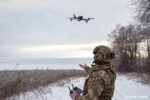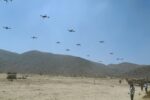In a significant shift toward bolstering NATO’s northern flank, Germany has announced plans to base naval assets—including warships, submarines, and long-range reconnaissance aircraft—in Iceland. The move underscores Berlin’s increasing focus on Arctic security amid intensifying geopolitical competition in the High North.
Strategic Context: Arctic Emerges as a New Theater of Competition
The German Ministry of Defence confirmed that elements of the Deutsche Marine (German Navy) will be forward-deployed to Iceland as part of an expanded NATO presence in the Arctic. This deployment includes surface combatants from the Brandenburg-class (Type 123) frigates and Type 212A submarines—both optimized for anti-submarine warfare (ASW) in cold waters—as well as Lockheed P-3C Orion maritime patrol aircraft.
The decision comes amid growing concerns over Russia’s military buildup along its northern coastlines and increased Chinese interest in Arctic sea routes. NATO has identified the region as a potential flashpoint due to melting ice opening new maritime corridors such as the Northern Sea Route (NSR), which could have strategic implications for global shipping and military logistics.
Naval Assets Deployed: Frigates and Submarines Tailored for Cold-Water Operations
Germany’s Brandenburg-class frigates are multi-role vessels with strong ASW capabilities—equipped with hull-mounted sonar systems (DSQS-24B), torpedo launchers for MU90 Impact torpedoes, and embarked helicopters such as the Sea Lynx Mk88A for extended detection ranges. These ships are well-suited for operations in contested maritime environments like the Greenland-Iceland-UK (GIUK) gap.
The Type 212A submarines offer stealthy underwater surveillance and interdiction capabilities. Their air-independent propulsion (AIP) system based on hydrogen fuel cells allows them to remain submerged for extended periods—ideal for monitoring Russian Northern Fleet movements or protecting undersea infrastructure such as fiber-optic cables or energy pipelines.
P-3 Orion ISR Aircraft Bolster Maritime Domain Awareness
Complementing naval deployments are Germany’s P-3C Orion aircraft—long-range maritime patrol platforms equipped with radar systems (AN/APS-137), magnetic anomaly detectors (MAD), sonobuoys, and electro-optical sensors. These aircraft can detect surface ships and submarines across vast oceanic areas critical to early warning missions.
The Luftwaffe operates eight P-3C Orions acquired from the Netherlands in the mid-2000s. While aging, these platforms remain effective for ISR missions until their planned replacement by Boeing P-8 Poseidon aircraft around 2030 under a joint European procurement initiative involving Norway and potentially France.
Iceland’s Role as a Strategic Outpost Reaffirmed
Iceland has no standing military but plays a pivotal role within NATO due to its geography at the GIUK gap—a chokepoint historically vital during the Cold War for tracking Soviet submarine movements into the Atlantic. The U.S. Navy maintains rotational presence at Keflavík Air Base with P-8 Poseidons under Task Force 67 operations.
Germany’s deployment will likely integrate into existing Allied Maritime Command structures through Combined Task Force arrangements or bilateral exercises such as Dynamic Mongoose or Trident Juncture. It also signals deeper German commitment to burden-sharing within NATO frameworks beyond Central Europe.
Operational Implications and Future Outlook
This deployment reflects Germany’s evolving defense posture under its Zeitenwende (“turning point”) doctrine announced after Russia’s full-scale invasion of Ukraine. With €100 billion earmarked for Bundeswehr modernization—including naval recapitalization—Berlin is positioning itself not just as a continental power but also an Atlantic one capable of projecting force into high-latitude theaters.
- Force Projection: Enhances German ability to monitor Russian submarine activity near Greenland-Iceland-Norway corridors.
- NATO Integration: Strengthens interoperability with U.S., UK, Norwegian forces operating similar platforms like P-8 Poseidon or Astute-class SSNs.
- Crisis Response: Provides rapid reaction capability against hybrid threats including sabotage of undersea cables or unmarked vessels operating covertly near critical infrastructure.
- Training & Exercises: Enables year-round cold-weather training cycles with Allied navies familiarizing crews with polar navigation challenges.
This move also complements broader EU-NATO coordination on Arctic security policy frameworks being developed through forums like NORDEFCO or Joint Expeditionary Force (JEF).










